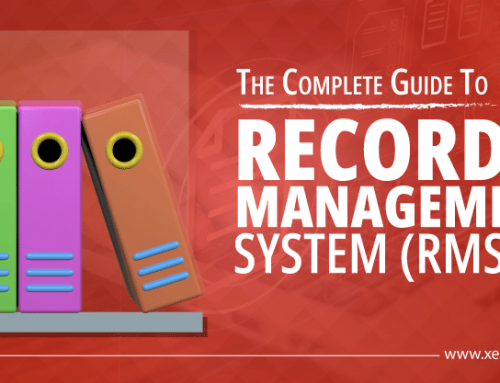It’s a topic that has been much in the news over the last few months, leaving us all questioning our online vulnerability and searching for ways to increase our cyber security both personally and in our businesses.
It has been estimated that annually there are upwards of 556 million cyber-crime victims. Larger companies and corporations employ technology and data security teams to protect themselves from these ‘invisible criminals.’ Smaller businesses, however, do not always have the resources for such an investment and are often easy prey for security breaches with devastating consequences.
You may have looked into your computer systems and social computing etiquette to assess the vulnerability, but have you thought about the other equipment and business solutions you use around the office?
We’ve rounded up a few of our top tips to help keep your business secure:
Protect your documents
Don’t leave yourself open to the risks presented by having paper documents lying around. Digitise your work and then password-protect the sensitive ones for additional protection. Cross-application password access is among the largest security breaches that hackers use to breach your company’s systems, so make sure it is a complex password and do not engage in interlocking accounts, Facebook sign-up, or simplistic password reminders.
Get on the right cloud!
As we’ve just highlighted, it’s important to take your work online and store it safely in the cloud. However, can you ensure that all your staff members always store these straight to the authorised and protected official cloud channels? It only takes one staff member to scan/save/download one document to an unofficial app or cloud storage account to leave the entire company at risk. Invest in scanning technology that automatically scans to the approved cloud platform to remove this risk.
Update your software
Approximately half of all cyber-attacks involve malware. Therefore, it is imperative that you acquire good antivirus software, regularly run it, and ensure that it is current. Also, you will need to ensure that the applications and operating systems on your computers are updated to the most recent versions. Don’t forget that your smartphones and mobile devices will need this level of protection as well, particularly when you consider that you are receiving proprietary texts, emails, and more via these devices, as well as accessing your company’s systems while out of the office.
Think about your office printing habits
What happens when your teams want to print a document? They sit at their desks, press ‘print,’ and then finish what they are doing before going to collect the document on their way to grab a coffee. Those important documents sit around in a printer tray or get picked up in amongst somebody else’s printing and disappear. Think about investing in a printer with user authentication, which means that the documents won’t be released until the user enters their code at the machine itself – when they are there ready and waiting to take the documents with them.
Utilize encryption
Encryption should ALWAYS be used for important files, particularly when sending data to a printer.
Back up and clear data
It is extremely important that all your company information is backed up to an external server/the cloud. Not only will this save you a great deal of effort and time should the system be breached, but if you back up and clear additional information from your networked machines and hard drive, it will leave very little for potential hackers to find/use should they get through.
Educate staff on social media guidelines
An increasing number of hackers are breaching systems using social media as an access point. Companies are becoming comfortable with networking online, and staff members are unwittingly providing information to unreliable sources. Make sure your staff are trained in social media best practices and are aware of your company’s social media guidelines.
Unfortunately, cyber-attacks are becoming an increasingly common threat to businesses of all sizes, with hackers becoming more and more resourceful. We, therefore, need to ensure we keep up with the pace of reviewing, updating, and protecting our equipment, software, and teams regularly to safely stay one step ahead.






